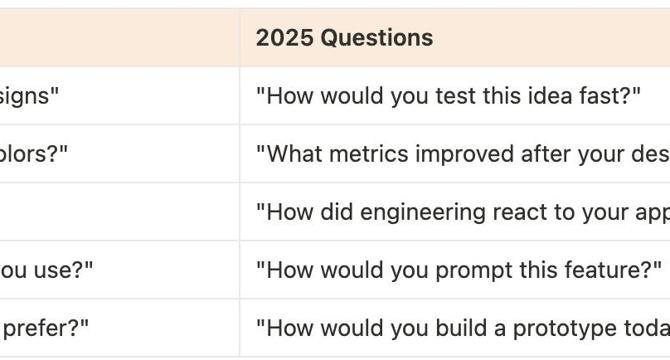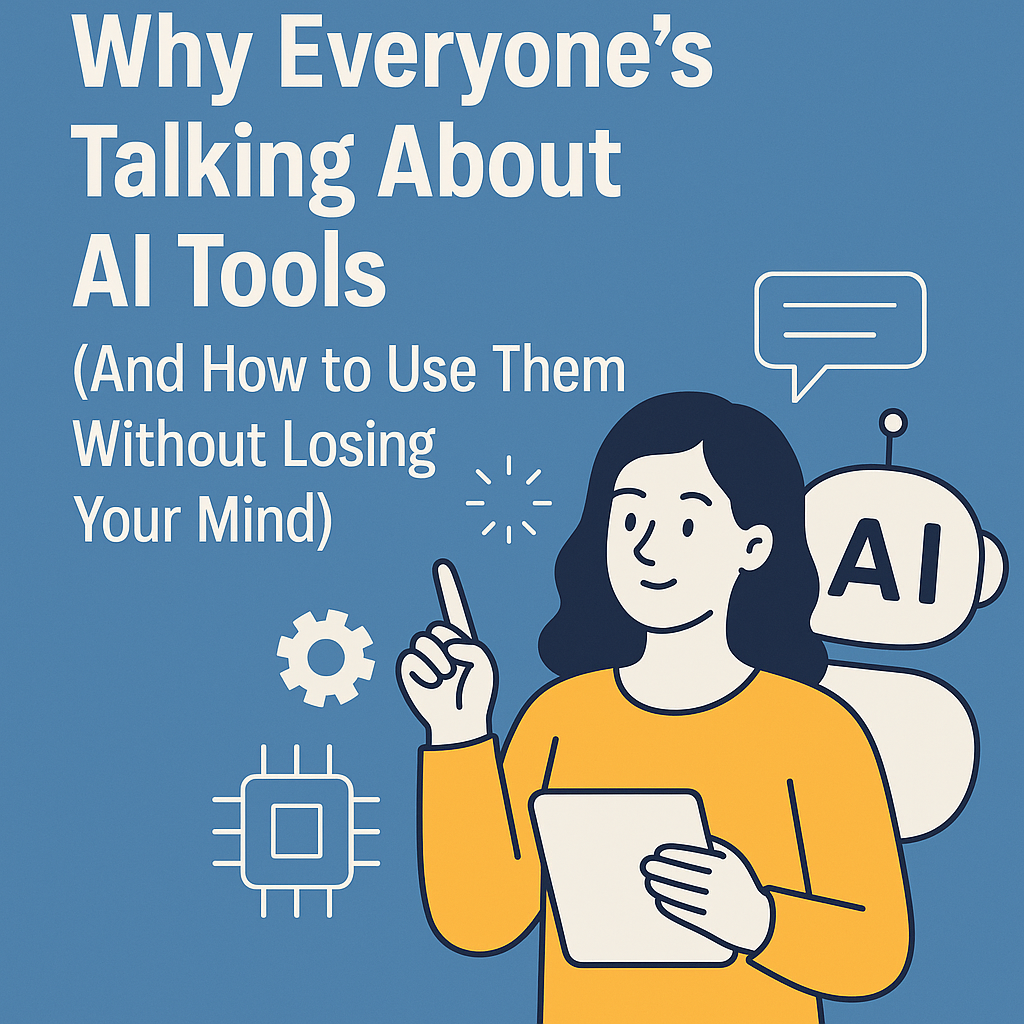Productivity News
HRKatha
271

Image Credit: HRKatha
India gears to be global talent powerhouse, launches GATI
- India launches the Global Access to Talent from India (GATI) Foundation in New Delhi to become a key supplier of talent worldwide.
- GATI aims to enable the outbound movement of 2 to 2.5 million workers annually and increase inward remittances to up to $170 billion.
- An estimated 34 million Indians and Persons of Indian Origin live abroad, contributing significantly to sectors like aviation, hospitality, and shipping globally.
- India is forging bilateral partnerships with countries like Japan, Mauritius, and Israel to facilitate talent mobility, with increasing interest from European nations and Southeast Asian economies in Indian professionals.
Read Full Article
16 Likes
Medium
17

Image Credit: Medium
How to Learn AI Without Crying (Or Reading a Textbook)
- Start learning AI by asking ChatGPT to explain AI simply and take a break.
- Engage your curiosity by asking questions like 'How does TikTok know my preferences?'
- Try Teachable Machine to train AI easily without needing a PhD.
- Allocate 25 minutes a day for learning AI, utilize online communities, and avoid textbooks.
Read Full Article
1 Like
HRKatha
89

Image Credit: HRKatha
Uber tightens office rules and benefits amid employee pushback
- Uber is updating its workplace policies, requiring employees to work from the office at least three times a week starting in June.
- The company is also adjusting its sabbatical policy, extending the eligibility for a paid month-long sabbatical to employees with eight years of service instead of five.
- During an all-hands meeting, employees expressed frustration over the sudden policy changes, particularly around returning to the office and revised sabbatical requirements.
- Uber's leadership defended the changes, highlighting the importance of in-person collaboration and business alignment, while emphasizing that these updates are not cost-cutting measures.
Read Full Article
5 Likes
HRKatha
240

Image Credit: HRKatha
Why ‘emotional onboarding’ is key to sustaining new hire enthusiasm
- Maintaining new hire enthusiasm beyond the first day at a job is crucial for organizations.
- Praveen Purohit emphasizes the need for a structured approach and consistent mentorship for new employees.
- Many new hires lose enthusiasm due to bureaucratic hurdles and lack of emotional and cultural integration.
- Emotional onboarding, focusing on human connections, is essential for creating a positive experience.
- Feedback loops, early wins, and cultural integration efforts contribute to sustained engagement of new hires.
- Providing support not just to employees but also their families enhances integration and loyalty.
- Leadership visibility, regular check-ins, and meaningful projects aid in keeping new hires engaged.
- Day one should mark the beginning of a journey, not just a one-time welcome event.
- Continuous effort and nurturing are required to turn initial enthusiasm into lasting commitment.
- Building cultures where every day feels significant is crucial for retaining top talent and maximizing potential.
Read Full Article
14 Likes
Dev
22

Image Credit: Dev
CSS Clamp: Tools That Make Fluid Design Effortless
- Responsive design used to involve endless media queries and trial-and-error, but now CSS offers a better solution: the power of clamp().
- Tools for clamp() help boost productivity, write cleaner CSS, and build fluid layouts with fewer breakpoints, making design decisions easier.
- Some real use cases for clamp tools include typography scaling, spacing control, width and height scaling, and consistent responsive UI components.
- Various community clamp() tools like ClampCalculator.com and others simplify CSS fluid design, offering features like font scaling, shorthand support, and live previews.
Read Full Article
1 Like
Dev
414

Image Credit: Dev
🚀 12+ Must-Have Free JSON APIs for Developers in 2025
- AquaScript offers free JSON APIs for developers in 2025, providing real, reliable, and ready-to-use data to enhance projects.
- Key features of AquaScript include instant access without sign-ups or API keys, lightning-fast responses, diverse data categories, and regular updates for data relevance.
- AquaScript provides APIs for books, movies, quotes, jokes, user data, recipes, and songs, catering to a wide range of project needs.
- Developers can visit AquaScript to explore and integrate these APIs into their projects for free, fast, and reliable data access.
Read Full Article
24 Likes
Leadgrowdevelop
330

Image Credit: Leadgrowdevelop
7 Powerful Ways to Boost Team Productivity with Automated Project Management Tools
- In a fast-growing business area, productivity is crucial for competitiveness and meeting outcomes, but traditional project management strategies can lead to missed deadlines and inefficiency.
- AI and automation are revolutionizing project management by optimizing task assignments, communication, and overall team efficiency.
- Automated project management tools save time on manual tasks like data entry, enhance visibility for managers, and prioritize tasks for higher productivity.
- Automated workflows streamline processes, eliminate bottlenecks, and expedite task completion, ensuring deadlines are met efficiently.
- Automation tools foster team collaboration, communication, and transparency, reducing the need for endless email threads and meetings.
- Advanced AI analytics in productivity tools help set and monitor SMART goals, track KPIs, and make data-driven decisions for improved team performance.
- Centralizing documents and resources in project management automation software streamlines access, control, and versioning, promoting transparency and reducing conflicts.
- Automated reporting and progress tracking tools save time, generate real-time updates, and keep managers informed while team members focus on task execution.
- Automation reduces errors, enhances accuracy, and promotes compliance and responsibility within teams through reminders, audit trails, and clear deadlines.
- Automated project management software boosts team efficiency, simplifies workflows, and encourages shared responsibility and goal achievement in a rapidly evolving business environment.
Read Full Article
19 Likes
Dev
8

Image Credit: Dev
The Documentation Paradox
- The Documentation Paradox highlights the challenge where despite extensive documentation, new hires still face difficulties and crucial context is often lost.
- Having too many documents can lead to difficulties in finding, trusting, and maintaining important information.
- Rather than focusing on creating comprehensive documentation, it's suggested to treat documentation as a conversation and use tools that simplify updating.
- The goal should be to have the right documentation that aids in moving teams forward efficiently, such as using tools like Jira to ensure discussions remain connected to tasks.
Read Full Article
Like
Dev
84

Image Credit: Dev
How to Install Foundation-Sec 8B by Cisco: The Ultimate Cybersecurity AI Model
- Foundation-Sec-8B by Cisco, a specialized cybersecurity AI model built on Llama-3.1-8B, offers threat mapping, vulnerability prioritization, and SOC workflow automation.
- Ideal for alert triage, compliance evidence extraction, and red-team planning, it allows secure local or cloud deployment for privacy-preserving AI-driven security solutions.
- The article details the step-by-step installation process of Foundation-Sec-8B, starting with prerequisites like RTX A6000 GPU and Anaconda installation.
- Using a GPU-powered Virtual Machine by NodeShift is recommended for its affordability and compliance with GDPR, SOC2, and ISO27001 requirements.
- Steps include setting up a NodeShift account, creating a GPU node with desired configurations, selecting authentication method and image, connecting via SSH, and setting up project dependencies.
- SSH port forwarding is necessary for remote machines like NodeShift GPU to access Jupyter Notebook on the local browser.
- The process involves creating a virtual environment with Anaconda, installing necessary dependencies, conducting SSH port forwarding, and running the Jupyter notebook session.
- Downloading model checkpoints and running the model in a Python notebook using transformers for tasks like mapping CVE IDs are demonstrated in the concluding steps.
- Foundation-Sec-8B aims to enhance threat detection, vulnerability assessment, and red-team simulations, facilitated by NodeShift for seamless deployment, flexibility, and cost-effectiveness.
- NodeShift offers scalable and secure infrastructure supporting on-prem and cloud-based installations, catering to organizations integrating AI models into their security workflows.
- The collaboration between Foundation-Sec-8B and NodeShift ensures efficient AI operations, performance, compliance, and control throughout the deployment process.
Read Full Article
5 Likes
Dev
120

Image Credit: Dev
The Day I Discovered enumerate()
- Discovering the enumerate() function in Python made the code cleaner and more Pythonic.
- Instead of using range(len(...)) for looping over a list, using enumerate() provides both the index and value directly.
- Using enumerate() reduces noise, clunkiness, and the chance of off-by-one errors in the code.
- By adopting enumerate(), the code becomes easier to read, requires less boilerplate, and can even start indexing from a custom number.
Read Full Article
7 Likes
Dev
256

Image Credit: Dev
Developer Productivity: Practical Tips for Staying Efficient and Focused
- Developers face challenges in maintaining productivity, especially when working remotely or juggling multiple tasks.
- Practical tips include creating a distraction-free workspace, planning tasks with intentionality, leveraging deep work techniques, and using the right tools for organization.
- Prioritizing learning, effective communication in remote teams, taking care of health, and reflecting on workflow are essential for developer productivity.
- Developer productivity is about working smarter, not harder, through intentional strategies tailored for efficiency and focus.
Read Full Article
15 Likes
HRKatha
147

Image Credit: HRKatha
TGSRTC urges employees to avoid strike; efforts on to attain financial stability
- The Telangana State Road Transport Corporation (TGSRTC) has urged its employees not to go on strike to avoid potential damage to the organization’s financial recovery and stability.
- Management highlighted that TGSRTC is making progress towards financial stability by reinvesting revenues into employee welfare and addressing staff concerns.
- Key achievements include implementing the long-delayed 2017 Pay Revision Commission, clearing pending dearness allowance instalments, and ensuring regular salary payments for employees.
- TGSRTC warned that strikes could hinder the corporation's survival, emphasized the prohibition of strikes under ESMA, and threatened legal action against those engaging in such activities.
Read Full Article
8 Likes
Medium
17

Image Credit: Medium
How to Prioritize Like a Pro (Even When Everything Feels Important)
- Prioritization is about making intentional decisions aligning with user needs, business goals, and team capacity.
- Effective prioritization is a mindset requiring clarity, confidence, and the ability to say no more often than yes.
- Key aspects include asking what problem is being solved, who benefits, and the impact of not doing it.
- Reflecting on delivery impact, alignment, and avoiding traps like shiny object syndrome are essential for successful prioritization.
Read Full Article
1 Like
ADPList’s Newsletter
67

Image Credit: ADPList’s Newsletter
Why I stopped prototyping in Figma
- The article discusses the shift from prototyping in Figma to a new AI-powered approach that involves prompt-to-code tools like Lovable, v0, and Cursor.
- The author shares their experience of moving from pixel-perfect Figma prototypes to a faster method that involves engineering early in the process.
- By using tools that generate specs and code based on prompts, the author was able to create working React prototypes in hours, eliminating static files and handoff debates.
- The new approach saved time, reduced maintenance costs, and allowed for quicker iteration and feedback from users.
- The importance of focusing on impact over appearance is highlighted, along with the benefits of involving engineers from the beginning of the design process.
- The article emphasizes the shift towards prompt-to-code tools like Lovable, v0, and Cursor, which enable designers to move from prompt to running code in a matter of hours.
- The benefits for designers include more time for user interaction, quicker idea testing, and faster code deployment.
- The risks involved in the new approach are discussed, such as security issues in early prototypes, brand drift, and prompt inconsistency, along with the corresponding fixes.
- The adoption path for teams transitioning to the new method is outlined, starting with internal tools and gradually moving towards more complex features.
- The article concludes with steps on how to make the switch to the prompt-to-code approach, starting with sketching the flow, generating a spec, and building using tools like Lovable, v0, or Cursor.
- Overall, the article showcases the potential of AI-powered workflows in transforming the design process to create live, testable products more efficiently.
Read Full Article
3 Likes
Medium
170

Image Credit: Medium
Why Everyone’s Talking About AI Tools (And How to Use Them Without Losing Your Mind)
- Use AI tools like ChatGPT, Notion AI, and Google Gemini to save time by summarizing notes, creating to-do lists, and writing better emails.
- AI can enhance your productivity but cannot replace your creativity, emotions, or critical thinking. Treat AI as an assistant, not a replacement for your brain.
- Learning how to prompt AI effectively is crucial for obtaining accurate results. Clear and contextual prompts lead to better outcomes, similar to smart Googling.
- Be cautious about sharing sensitive information with AI tools to maintain your privacy and security. Avoid disclosing passwords, personal data, or confidential information.
Read Full Article
10 Likes
For uninterrupted reading, download the app